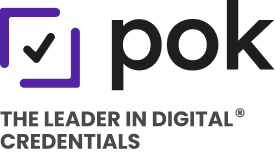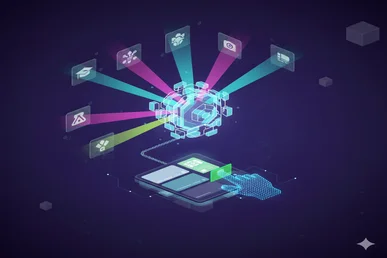On September 11, 2025, I had the opportunity to represent POK at the Webinar of the Central American University Council (CSUCA), focused on a topic I am truly passionate about: Microcredentials as the “Currency of Exchange” between Education and Work.
It was inspiring to see how many universities in the region already view microcredentials as a central element of the academic future. I’m deeply grateful to have been part of that dialogue, reaffirming a shared goal: building a more flexible, interoperable, and employability-oriented educational ecosystem.
Why does it matter if a credential is on blockchain?
When we think about a digital credential —a diploma, badge, or certificate— we usually focus on what’s visible: who issued it and what it certifies.
But its real value lies in security, reliability, and traceability.
A traditional credential, without blockchain, depends entirely on a central authority —a university, ministry, or certificate provider. If that entity changes its policies, loses its records, or ceases to exist, the credential can become invalid, falsified, or unverifiable.
A blockchain-based credential, on the other hand, is built differently: through decentralization. Its data is distributed across hundreds or thousands of nodes, making it nearly impossible to alter. Changing it would mean convincing an entire global network—something virtually impossible.
Moreover, blockchain gives learners digital sovereignty—true ownership of their achievements. Holders can store, share, and verify their credentials independently, without relying on intermediaries.
When the credential is issued as an NFT on a public blockchain, these benefits multiply:
- It remains verifiable even if the issuing institution no longer exists.
- Anyone can validate it in real time, without third parties.
- It follows international standards like Open Badge 3.0 or Europass, enabling global recognition.
In short, a credential without blockchain is fragile and dependent, while a blockchain credential is secure, lasting, and universally verifiable.
That difference defines the future of education and professional recognition.
Microcredentials: A response to a new educational paradigm
- The need for constant upskilling in rapidly changing job markets.
- The demand for specific, measurable skills from employers.
- The rise of modular, flexible learning pathways for students.
Rather than replacing traditional degrees, microcredentials complement them, allowing learners to prove competencies, achievements, and skills in real contexts.
The challenge lies in transforming institutional culture to adopt these models while maintaining academic excellence.
Challenges to overcome
During the CSUCA webinar and similar regional discussions, several barriers became clear:
1. Employer recognition
If employers don’t understand what a blockchain microcredential is, they won’t value it. We must educate the labor market, showcase use cases, and build trust frameworks.
2. Institutional culture
Universities still operate under rigid academic structures. To make microcredentials successful, we need agile programs with transparent outcomes and verifiable standards.
3. Interoperability and standards
What happens when a student with a microcredential from Central America wants to study or work in Europe?
Without open, verifiable standards, that credential loses strength.
That’s why we must advance toward models aligned with Open Badge 3.0, ELM, and Europass.
4. Access and adoption
Having blockchain or NFT technology doesn’t guarantee usage. There are digital and connectivity gaps, and most Latin American countries still lack consistent public policies promoting these tools.
Toward a transformative action plan
To make blockchain microcredentials a real bridge between education and employability, we need to move forward in five key areas:
- University–industry alliances to align microcredentials with real market needs.
- Pilot projects using public blockchains for issuing and verifying NFT credentials.
- Regulatory frameworks recognizing digital credentials as legally valid records.
- Open standards to prevent technological silos and ensure interoperability.
- Capacity building for students, educators, and employers to understand and use these credentials effectively.
Final reflections
During the CSUCA panel, I confirmed we are at a turning point. We can keep replicating traditional models or embrace innovation in a secure, fair, and open way.
NFT microcredentials on blockchain represent one of the most powerful opportunities to democratize skill recognition, strengthen employability, and foster global mobility.
At POK, our mission is to build an ecosystem where every learner owns, shares, and validates their verifiable digital credentials aligned with quality standards, interoperability, and authenticity.
Education’s future depends not only on technology, but on how we use it to open real opportunities.
👉 Request a personalized demo and discover how POK helps institutions issue verifiable blockchain microcredentials.

.webp)
.webp)

